Foreign relations of Finland
This article's factual accuracy may be compromised due to out-of-date information. (January 2012) |
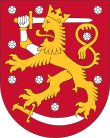 |
|---|
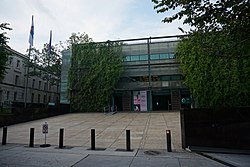
The foreign relations of Finland are the responsibility of the president of Finland, who leads foreign policy in cooperation with the government. Implicitly the government is responsible for internal policy and decision making in the European Union. Within the government, preparative discussions are conducted in the government committee of foreign and security policy (ulko- ja turvallisuuspoliittinen ministerivaliokunta), which includes the Prime Minister and at least the Minister of Foreign Affairs and the Minister of Defence, and at most four other ministers as necessary.[1] The committee meets with the President as necessary. Laws concerning foreign relations are discussed in the parliamentary committee of foreign relations (ulkoasiainvaliokunta, utrikesutskottet). The Ministry of Foreign Affairs implements the foreign policy.
During the Cold War, Finland's foreign policy was based on official neutrality between the Western powers and the Soviet Union, while simultaneously stressing Nordic cooperation in the framework of the Nordic Council and cautious economic integration with the West as promoted by the Bretton-Woods Agreement and the free trade treaty with the European Economic Community. Finland shares this history with close neighbour Sweden, which Finland was a part of until the split of the Swedish empire in 1809. Finland did not join the Soviet Union's economic sphere (Comecon) but remained a free-market economy and conducted bilateral trade with the Soviet Union. After the dissolution of the Soviet Union in 1991, Finland unilaterally abrogated the last restrictions imposed on it by the Paris peace treaties of 1947 and the Finno-Soviet Agreement of Friendship, Cooperation, and Mutual Assistance. The government filed an application for membership in the European Union (EU) three months after the dissolution of the Soviet Union and became a member in 1995. Finland did not attempt to join NATO, even though post-Soviet countries on the Baltic Sea and elsewhere joined. Nevertheless, defence policymakers quietly converted to NATO equipment and contributed troops.
President Martti Ahtisaari and the coalition governments led Finland closer to the core EU in the late 1990s. Finland was considered a cooperative model state, and Finland did not oppose proposals for a common EU defence policy.[2] This was reversed in the 2000s, when Tarja Halonen and Erkki Tuomioja made Finland's official policy to resist other EU members' plans for common defense.[2] However, Halonen allowed Finland to join European Union Battlegroups in 2006 and the NATO Response Force in 2008.
Relations with Russia are cordial and common issues include bureaucracy (particularly at the Vaalimaa border crossing), airspace violations, development aid Finland gives to Russia (especially in environmental problems that affect Finland), and Finland's energy dependency on Russian gas and electricity. Behind the scenes, the administration witnessed a resurrection of Soviet-era tactics as recently as 2017. The Finnish Security Intelligence Service, the nation's security agency, says the known number of Russian agents from Foreign Intelligence Service (SVR) and GRU now exceeds Cold War levels and there are unknown numbers of others.[3] Russian Foreign Ministry spokeswoman Maria Zakharova said in March 2022 that her government would have to respond if Finland became a NATO member.[4]
As of March 2011 Finland maintains diplomatic relations with all UN member states.[5]
All NATO countries approved Finland's accession to the military alliance by April 1, 2023, and it officially joined on April 4. The move was the final process in Finland's transition from conducting a foreign policy of neutrality to clearly standing as an official part of the Western bloc.
History
[edit]

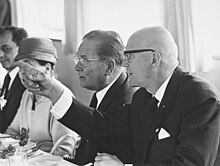


After Finland declared its full independence in 1917, the Finnish Civil War, including interventions by Imperial Germany and Soviet Russia, and failure of the Communist revolution, resulted in the official ban on Communism, and strengthening relations with Western countries. Overt alliance with Germany was not possible due to the result of the First World War, but in general the period of 1918 to 1939 was characterised by economic growth and increasing integration to the Western world economy. Relations with Soviet Russia from 1918 to 1939 were icy; voluntary expeditions to Russia called heimosodat ended only in 1922, four years after the conclusion of the Finnish Civil War. However, attempts to establish military alliances were unsuccessful.[7] Thus, when the Winter War broke out, Finland was left alone to resist the Soviet attack. Later, during the Continuation War, Finland declared "co-belligerency" with Nazi Germany, and allowed Northern Finland to be used as a German attack base. For 872 days, the German army, aided indirectly by Finnish forces, besieged Leningrad, the Soviet Union's second-largest city.[8] The peace settlement in 1944 with the Soviet Union led to the Lapland War in 1945, where Finland fought Germans in northern Finland.
From the end of the Continuation War with the Soviet Union in 1944 until 1991, the policy was to avoid superpower conflicts and to build mutual confidence with the Western powers and the Soviet Union. Although the country was culturally, socially, and politically Western, Finns realised they had to live in peace with the Soviets and so could take no action that might be interpreted as a security threat. The dissolution of the Soviet Union in 1991 opened up dramatic new possibilities for Finland and has resulted in the Finns actively seeking greater participation in Western political and economic structures. The popular support for the strictly self-defensive doctrine remains.[9]
2000 constitution
[edit]In the 2000 constitution, where diverse constitutional laws were unified into one statute, the leading role of the President was slightly moderated. However, because the constitution still stipulates only that the President leads foreign policy and the government internal policy, the responsibility over European Union affairs is not explicitly resolved. Implicitly this belongs to the powers of the government. In a cohabitation situation as with Matti Vanhanen's recent second government right-wing government and left-wing President Tarja Halonen, there can be friction between government ministers and the president.
The arrangement has been criticised by Risto E. J. Penttilä for not providing a simple answer of who's in charge.[2]
Multilateral relations
[edit]Finnish foreign policy emphasises its participation in multilateral organisations. Finland joined the United Nations in 1955 and the European Union in 1995. As noted, the country also is a member of NATO's Partnership for Peace as well as an observer in the Euro-Atlantic Partnership Council. The military has been prepared to be more compatible with NATO, as co-operation with NATO in peacekeeping is needed, but military alliance does not have popular support. Political scientist Teija Tiilikainen has attributed tensions like this one to the importance that Finland's political identity places on sovereignty and the (sometimes competing) stress it places on international cooperation.[10]
In the European Union, Finland is a member of the Eurozone, and in addition, the Schengen treaty abolishing passport controls. 60% of foreign trade is to the EU. Other large trade partners are Russia and the United States.
Finland is well represented in the UN civil service in proportion to its population and belongs to several of its specialised and related agencies. Finnish troops have participated in United Nations peacekeeping activities since 1956, and the Finns continue to be one of the largest per capita contributors of peacekeepers in the world. Finland is an active participant in the Organization for Security and Cooperation in Europe (OSCE) and in early 1995 assumed the co-chairmanship of the OSCE's Minsk Group on the Nagorno-Karabakh conflict.
Cooperation with the other Scandinavian countries also is important to Finland, and it has been a member of the Nordic Council since 1955. Under the council's auspices, the Nordic countries have created a common labor market and have abolished immigration controls among themselves. The council also serves to coordinate social and cultural policies of the participating countries and has promoted increased cooperation in many fields.
In addition to the organisations already mentioned, Finland is a member of the International Bank for Reconstruction and Development, the International Monetary Fund, the World Trade Organization, the International Finance Corporation, the International Development Association, the Bank for International Settlements, the Asian Development Bank, the Inter-American Development Bank, the Council of Europe, and the Organisation for Economic Co-operation and Development.
Following the dissolution of the Soviet Union, Finland has moved steadily towards integration into Western institutions and abandoned its formal policy of neutrality, which has been recast as a policy of military nonalliance coupled with the maintenance of a credible, independent defence. Finland's 1994 decision to buy 64 F-18 Hornet fighter planes from the United States signalled the abandonment of the country's policy of balanced arms purchases from Communist countries and Western countries.
In 1994, Finland joined NATO's Partnership for Peace; the country is also an observer in the North Atlantic Cooperation Council. Finland became a full member of the EU in January 1995, at the same time acquiring observer status in the EU's defence arm, the Western European Union.
In 2003, Anneli Jäätteenmäki of the Centre Party won the elections after she had accused her rival Paavo Lipponen, who was prime minister at the time, of allying neutral Finland with the United States in the war in Iraq during a meeting with President George W. Bush, and thus associated Finland with what many Finns considered an illegal war of aggression. Lipponen denied the claims and declared that "We support the UN and the UN Secretary-General." Jäätteenmäki resigned as prime minister after 63 days in office amid accusations that she had lied about the leak of the documents about the meeting between Bush and Lipponen. This series of events was considered scandalous and it is named Iraq leak or Iraq-gate.[11]
Generally, Finland has abided by the principle of neutrality and has good relations with nearly all countries, as evidenced by the freedom of travel that a Finnish passport gives; though relations with Russia remain strained and are often tense due to past historical grievances, including Russian threats and past invasion.[12]
After almost 30 years of close partnership with NATO, Finland joined the Alliance on 4 April 2023. Finland's partnership with NATO was historically based on its policy of military non-alignment, which changed following Russia's full-scale invasion of Ukraine in February 2022.[13] On 1 March 2024, Alexander Stubb, a staunch supporter of NATO, was sworn in as Finland's new president.[14] On 7 March 2024, Stubb made his first foreign trip as Finland's new president to Nato's Nordic Response military exercise in northern Norway.[15]
Diplomatic relations list
[edit]List of countries which Finland maintains diplomatic relations with:

| ||
|---|---|---|
| # | Country | Date[16] |
| 1 | 10 January 1918 | |
| 2 | 10 January 1918 | |
| 3 | 24 January 1918 | |
| 4 | 28 March 1918 | |
| 5 | 6 April 1918 | |
| 6 | 11 May 1918[17] | |
| 7 | 19 July 1918 | |
| 8 | 14 August 1918 | |
| 9 | 16 August 1918 | |
| 10 | 1 March 1919 | |
| 11 | 8 March 1919[18] | |
| 12 | 24 May 1919 | |
| 13 | 30 May 1919 | |
| 14 | 9 July 1919 | |
| 15 | 6 September 1919 | |
| 16 | 10 January 1920 | |
| 17 | 28 June 1920 | |
| 18 | 31 December 1920[19] | |
| 19 | 24 October 1921 | |
| 20 | 8 April 1922[20] | |
| 21 | 12 April 1922 | |
| 22 | April 1922[21] | |
| 23 | 9 December 1924[22] | |
| 24 | 29 January 1926 | |
| 25 | 18 October 1927[23] | |
| 26 | 5 April 1929 | |
| 27 | 8 April 1929 | |
| 28 | 7 August 1929[24] | |
| 29 | 15 December 1930 | |
| 30 | 20 February 1931 | |
| 31 | 12 December 1931[25] | |
| 32 | 21 March 1935 | |
| 33 | 2 October 1936 | |
| – | 31 July 1942[26] | |
| 34 | 15 August 1947 | |
| 35 | 21 November 1947 | |
| 36 | 15 May 1949 | |
| 37 | 31 May 1949 | |
| 38 | 10 September 1949 | |
| 39 | 22 July 1950 | |
| 40 | 28 October 1950 | |
| 41 | 14 November 1950 | |
| 42 | 12 January 1951 | |
| 43 | 22 May 1953 | |
| 44 | 26 March 1954 | |
| 45 | 31 March 1954 | |
| 46 | 21 June 1954 | |
| 47 | 21 June 1954 | |
| 48 | 6 September 1954 | |
| 49 | 24 September 1954 | |
| 50 | 14 July 1955 | |
| 51 | 21 June 1956 | |
| 52 | 8 June 1956 | |
| 53 | 15 May 1959 | |
| 54 | 17 July 1959 | |
| 55 | 17 July 1959 | |
| 56 | 17 July 1959 | |
| 57 | 28 November 1959 | |
| 58 | 15 January 1960 | |
| 59 | 12 August 1960 | |
| 60 | 7 October 1960 | |
| 61 | 27 January 1961 | |
| 62 | 19 July 1961 | |
| 63 | 2 September 1961 | |
| 64 | 2 November 1961 | |
| 65 | 18 January 1963 | |
| 66 | 18 January 1963 | |
| 67 | 29 March 1963 | |
| 68 | 8 July 1963 | |
| 69 | 21 September 1963 | |
| 70 | 20 November 1963 | |
| 71 | 18 June 1964 | |
| 72 | 13 July 1964 | |
| 73 | 5 February 1965 | |
| 74 | 14 June 1965 | |
| 75 | 14 June 1965 | |
| 76 | 14 June 1965 | |
| 77 | 28 September 1965 | |
| 78 | 23 August 1966 | |
| 79 | 29 September 1966 | |
| 80 | 22 March 1967 | |
| 81 | 14 April 1967 | |
| 82 | 18 August 1967 | |
| 83 | 8 March 1968 | |
| 84 | 31 January 1969 | |
| 85 | 21 February 1969 | |
| 86 | 21 February 1969 | |
| 87 | 6 June 1969 | |
| 88 | 20 January 1970 | |
| 89 | 24 March 1970 | |
| 90 | 3 April 1970 | |
| 91 | 22 May 1970 | |
| 92 | 12 March 1971 | |
| 93 | 17 December 1971 | |
| 94 | 5 May 1972 | |
| 95 | 17 November 1972 | |
| 96 | 7 January 1973 | |
| 97 | 25 January 1973 | |
| 98 | 7 February 1973 | |
| 99 | 1 April 1973 | |
| 100 | 1 June 1973 | |
| 101 | 24 August 1973 | |
| 102 | 31 October 1973 | |
| 103 | 1 April 1974 | |
| 104 | 9 August 1974 | |
| 105 | 21 September 1974 | |
| 106 | 20 December 1974 | |
| 107 | 1 January 1975 | |
| 108 | 1 January 1975 | |
| 109 | 21 February 1975 | |
| 110 | 18 July 1975 | |
| 111 | 28 November 1975 | |
| 112 | 22 December 1975 | |
| 113 | 30 January 1976 | |
| 114 | 18 September 1976 | |
| 115 | 1 June 1977 | |
| 116 | 31 September 1977 | |
| 117 | 1 December 1977 | |
| 118 | 1 December 1977 | |
| 119 | 1 December 1977 | |
| 120 | 1 December 1977 | |
| 121 | 19 December 1977 | |
| 122 | 1 July 1978 | |
| 123 | 1 February 1979 | |
| 124 | 1 March 1979 | |
| 125 | 1 March 1979 | |
| 126 | 2 April 1979 | |
| 127 | 1 June 1979 | |
| 128 | 24 August 1979 | |
| 129 | 1 January 1980 | |
| 130 | 15 February 1980 | |
| 131 | 1 June 1980 | |
| 132 | 31 July 1980 | |
| 133 | 1 August 1980 | |
| 134 | 1 June 1983 | |
| 135 | 22 July 1983 | |
| 136 | 2 January 1984 | |
| 137 | 10 August 1984 | |
| 138 | 1 May 1986 | |
| 139 | 1 April 1987 | |
| 140 | 20 May 1988 | |
| 141 | 1 September 1988 | |
| 142 | 11 November 1988 | |
| 143 | 22 December 1988 | |
| 144 | 21 March 1990 | |
| 145 | 20 September 1990 | |
| 146 | 29 August 1991 | |
| 147 | 29 August 1991 | |
| 148 | 29 August 1991 | |
| 149 | 17 February 1992 | |
| 150 | 19 February 1992 | |
| 151 | 26 February 1992 | |
| 152 | 26 February 1992 | |
| 153 | 26 February 1992 | |
| 154 | 26 February 1992 | |
| 155 | 26 February 1992 | |
| 156 | 23 March 1992 | |
| 157 | 24 March 1992 | |
| 158 | 25 March 1992 | |
| 159 | 13 May 1992 | |
| 160 | 11 June 1992 | |
| 161 | 26 June 1992 | |
| 162 | 8 July 1992 | |
| 163 | 1 January 1993 | |
| 164 | 28 May 1993 | |
| 165 | 1 December 1993 | |
| 166 | 17 December 1993 | |
| 167 | 26 December 1993 | |
| 168 | 29 December 1994 | |
| 169 | 17 July 1995 | |
| 170 | 17 July 1995 | |
| 171 | 19 June 1997 | |
| 172 | 16 July 1999 | |
| 173 | 11 August 1999 | |
| 174 | 20 June 2002 | |
| 175 | 28 June 2005 | |
| 176 | 2 December 2005 | |
| 177 | 12 June 2006 | |
| 178 | 14 March 2007 | |
| 179 | 29 March 2007 | |
| 180 | 30 April 2008 | |
| 181 | 17 June 2008 | |
| 182 | 26 September 2008 | |
| — | 3 February 2009 | |
| 183 | 6 March 2009 | |
| 184 | 24 March 2009 | |
| 185 | 5 May 2009 | |
| 186 | 19 August 2009 | |
| 187 | 11 September 2009 | |
| 188 | 22 September 2009 | |
| 189 | 22 September 2009 | |
| 190 | 4 May 2010 | |
| 191 | 12 May 2010 | |
| 192 | 29 June 2012[27] | |
Multilateral
[edit]| Organization | Formal Relations Began | Notes |
|---|---|---|
| 1955 | See Permanent Representative of Finland to the United Nations | |
| 1955 | 
| |
| 1973 | See Conference on Security and Co-operation in Europe 
| |
| 1995 | See 1995 enlargement of the European Union 
| |
| 2023 | See Finland–NATO relations 
|
Africa
[edit]| Country | Formal Relations Began | Notes |
|---|---|---|
| 18 January 1963 |
| |
| 18 September 1976 | ||
| 1 July 1978 | ||
| 1 July 1978 |
| |
| 1 January 1980 |
| |
|
Comoros is represented in Finland by its embassy in Paris, France.[28] | ||
| 14 March 2007 | ||
| 15 February 1947 |
| |
| July 17, 1959 | See Ethiopia–Finland relations
Ethiopia is represented in Finland through its embassy in Stockholm, Sweden. Finland has an embassy in Addis Ababa. Ethiopia is one of Finland's long-term development partners and in the water and education sectors.[31] On April 29, 2009, the Ministry of Finance and Economic Development announced that the Finnish government had made a grant of 11.4 million euros to enable the Benishangul-Gumuz Region to upgrade its capacity to plan and manage its rural water supply and sanitation program to achieve universal access for all Ethiopians.[32] | |
| 14 June 1965 | ||
| 17 July 1959 | ||
| 18 July 1975 | ||
| 21 March 1990 | See Finland–Namibia relations
Finland recognised Namibia on March 21, 1990. Both countries established diplomatic relations on the same day. Namibia is represented in Finland through its embassy in Stockholm, Sweden. Finland has an embassy in Windhoek and an honorary consulate in Walvis Bay. | |
| 15 May 1949 | See Finland – South Africa relations
A South African legation was established in 1967 and relations were then upgraded to ambassadorial level in March 1991.[34] Finland has an embassy in Pretoria, a general consulate in Johannesburg, and a consulate in Cape Town. South Africa is accredited to Finland from its embassy in Stockholm, Sweden. During World War II South Africa declared war on Finland.[35] Finland was a strong supporter of the dismantling of Apartheid in South Africa.[35][36][37] South African exports to Finland include fresh and dried fruits, wine, pulp, paper, iron, steel, and coal. South Africa imports telecommunication equipment, paper, board products, and machinery from Finland.[34] | |
| 14 June 1965 |
| |
| 17 July 1959 | ||
| 8 March 1968 |
Americas
[edit]| Country | Formal Relations Began | Notes |
|---|---|---|
| 26 September 2008 |
| |
| 11 May 1918 | See Argentina–Finland relations | |
| 2 December 2005 |
| |
| 1 December 1977 |
| |
| 19 June 1997 |
| |
| 21 September 1963 |
| |
| 1929 | See Brazil–Finland relations 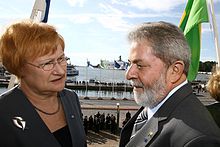
| |
| 21 November 1947 | See Canada–Finland relations 
| |
| 17 June 1919 | See Chile–Finland relations
Chile recognised Finland's independence on June 17, 1919. Diplomatic relations between them were established in 1931 and have been continuously maintained, despite pressures at times to discontinue them.[41] The two countries maintain resident ambassadors in both capitals.[41]
| |
| 26 May 1954 |
The relations between Colombia and Finland are harmonious as both countries share a similar ideology based on democracy, human rights and a lasting peace. It's because of this that Colombia has decided to open an embassy in Helsinki. Colombia also defines Finland as a key player on Colombia's accession into the OECD and the ratification of the Colombia-European Union Trade Agreement.[42] | |
| 23 August 1966 | ||
| 23 January 1959 |
| |
| 18 August 2009 |
| |
| 2 January 1984 |
| |
| 5 February 1965 | ||
| 14 April 1967 |
| |
| 1 June 1980 |
| |
| 18 August 1967 |
| |
| 2 April 1979 |
| |
| 29 September 1966 |
| |
| 30 January 1976 |
| |
| 1 December 1977 |
| |
| 2 October 1936 | See Finland–Mexico relations
 Mexico recognized the independence of Finland in July 1920.
| |
| 22 December 1975 | See Finland–Nicaragua relations | |
| 1 December 1975 |
| |
| 20 November 1963 |
| |
| 29 March 1963 | 
| |
| 22 September 2009 |
| |
| 22 September 2009 |
| |
| 30 January 1976 | ||
| 28 June 2005 |
| |
| 17 December 1971 |
| |
| 30 May 1919[51] | See Finland–United States relations   5-25-1988 President Reagan meeting with President Mauno Henrik Koivisto during a trip to Finland at the Helsinki airport in Vantaa Relations between the United States and Finland are warm. Some 200,000 US citizens visit Finland annually, and about 3,000 US citizens are resident there. The US has an educational exchange program in Finland that is comparatively large for a Western European country of Finland's size. It is financed in part from a trust fund established in 1976 from Finland's final repayment of a US loan made in the aftermath of World War I. Finland is bordered on the east by Russia and, as one of the former Soviet Union's neighbours, has been of particular interest and importance to the US both during the Cold War and in its aftermath. Before the Soviet Union dissolved in 1991, longstanding US policy was to support Finnish neutrality and to maintain and reinforce Finland's historic, cultural, and economic ties with the West. The US has welcomed Finland's increased participation since 1991 in Western economic and political structures. Economic and trade relations between Finland and the United States are active and were bolstered by the F-18 purchase. US-Finland trade totals almost $5 billion annually. The US receives about 7% of Finland's exports – mainly wood pulp and paper, ships, machinery, electronics and instruments and refined petroleum products[52] – and provides about 7% of its imports – principally computers, semiconductors, aircraft, and machinery.
| |
| 21 March 1935 | See Finland–Uruguay relations
| |
| 31 March 1954 |
|
Asia
[edit]| Country | Formal Relations Began | Notes |
|---|---|---|
| 11 May 1956 | ||
| 25 March 1992 | See Armenia–Finland relations
| |
| 24 March 1992 | See Azerbaijan–Finland relations

| |
| 20 January 1970[55] |  | |
| October 28, 1950[58] | See China–Finland relations
The two international trade organisations are the Finland-China Trade Association and the China Council for Promotion of International Trade (CCPIT). One of the fastest growing areas of trade between the two countries is in environmental protection.[59][60] and information technology. Nokia is the largest Finnish investor in China. | |
| 8 July 1992 | See Finland–Georgia relations 
| |
| 10 September 1949 | See Finland–India relations  | |
| 6 September 1954 | See Finland–Indonesia relations | |
See Finland–Iran relations  Photograph of the Shah and the Shahbanu during their visit to Tapiola residencial area in Espoo, Finland. To their right, the Finnish president Urho Kekkonen. | ||
| 15 May 1959 |
| |
| 14 November 1950 | See Finland–Israel relations
| |
| 6 September 1919 | See Finland–Japan relations 
| |
| 13 May 1992[69] |
See Finland–Kazakhstan relations
| |
| 23 March 1992 |
| |
| 17 November 1972[70] | See Finland–Malaysia relations
| |
| 30 August 1955 |
| |
| 1 June 1973[73] | See Finland–North Korea relations
| |
| Northern Cyprus has a Representative Office in Helsinki.[77] | ||
| January 12, 1951 | See Finland–Pakistan relations
| |
| July 14, 1995 |
| |
| 23 September 1969 | ||
| 24 August 1973 |
| |
| 22 May 1953 | ||
| 21 June 1954 |
| |
| 20 May 1920 | See Finland–Turkey relations
| |
| 21 February 1975 | See Finland–United Arab Emirates relations
| |
| 5 January 1973 |
|
Europe
[edit]| Country | Formal Relations Began | Notes |
|---|---|---|
| 8 June 1956 | 
| |
| 29 March 1949 | See Austria–Finland relations 
| |
| 26 February 1992 |  | |
| 9 July 1919 |
| |
| 5 August 1918 | See Bulgaria–Finland relations

| |
| 19 February 1992 | See Croatia–Finland relations

| |
| 2 September 1961 | See Cyprus–Finland relations
| |
| 1 January 1993 | 
| |
| 18 February 1918 | See Denmark–Finland relations 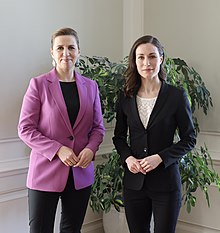
Denmark and Finland share a long history, where Danish Vikings settled in Finland and made crusades. Both countries were also part of the Kalmar Union.[93] Denmark was the first country along with Sweden to recognize Finland's Independence. There are 3,000 Finns living in Denmark, and 1,235 Danes living in Finland. During Winter War, over 1,000 Danish volunteers came to help Finland.[94] During the Winter war and the Continuation war, Denmark took 4,200 Finnish war children.[95] Exports to Denmark value at 1.380 billion euros, and imports from Denmark value at 1.453 billion, making Denmark Finland's 10th largest import-trading partner. The Nordic Culture Fund and the Finnish-Danish Cultural Fund support projects of artists in both countries. Many tourists from Finland visit Denmark, 206,000 in 2017, and vice versa: 113,000 Danish tourists visited Finland in 2017. In 1918 Mannerheim visited Copenhagen, asking if Prince Aage would have wanted to become the King of Finland. | |
| 29 August 1991 | See Estonia–Finland relations
 Finland's main language, Finnish, is related to Estonian, and there is and has been a certain feeling of kinship. 76% of Finns have visited Estonia and in 2004, 1.8 million Finns reported visiting Estonia. Finnish and Swedish investors are the largest foreign investors in Estonia.[96] Finland and Estonia are members of the European Union and the Schengen agreement, freeing international travel and trade between the countries. Finland's government recognised Estonia's independence in 1920. In response to the Soviet invasion, diplomatic missions were de facto removed. However, when Estonia declared independence, this "temporary obstruction" was resolved. Both countries restored diplomatic relations on August 29, 1991.
Finland contributed and continues to contribute military aid to Estonia, e.g., training of officers, provision of equipment.
| |
| 24 January 1918 | See Finland–France relations 
| |
| 4 January 1918 | See Finland–Germany relations
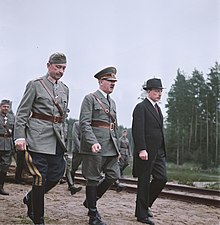 
| |
| 5 January 1918 | See Finland–Greece relations 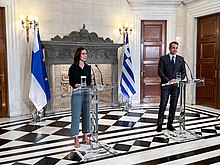
| |
| 20 May 1947 | See Finland–Hungary relations
| |
| 15 August 1947 | See Finland–Iceland relations

| |
| 2 November 1961 | 
| |
| 6 September 1919 | See Finland–Italy relations

| |
| 3 February 2009 |
Finland recognised Kosovo March 7, 2008.[107][108] Finland maintains an embassy in Pristina.[109] | |
| 24 September 1919 | See Finland–Latvia relations 
| |
| 4 November 1919 | See Finland–Lithuania relations 
| |
| 25 October 1921 | 
| |
| 21 February 1969 |
| |
| 12 July 2006 |  | |
| 18 August 1918 | See Finland–Netherlands relations 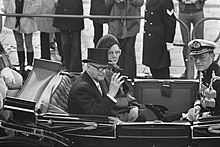 
| |
 | ||
| 6 April 1918 | See Finland–Norway relations
| |
| 8 March 1919 | See Finland–Poland relations 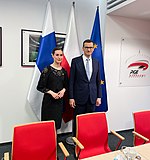
| |
| 10 January 1920 |
| |
| 14 October 1949 |
| |
| 30 December 1991 |
  Relations with Russia are peaceful and friendly. Finland imports a lot of goods and basic necessities, such as fuel, and the two nations are agreeing on issues more than disagreeing on them. Finland was a part of the Russian Empire for 108 years, after being annexed from the Swedish empire. Discontent with Russian rule, Finnish national identity, and World War I eventually caused Finland to break away from Russia, taking advantage of the fact that Russia was withdrawing from World War I and a revolution was starting in earnest. Following the Finnish Civil War and October Revolution, Russians were virtually equated with Communists and due to official hostility to Communism, Finno-Soviet relations in the period between the world wars remained tense. Voluntary activists arranged expeditions to Karelia (heimosodat), which ended when Finland and the Soviet Union signed the Treaty of Tartu in 1920. However, the Soviet Union did not abide by the treaty when they blockaded Finnish naval ships. Finland was attacked by the Soviet Union in 1939. Finland fought the Winter War and the Continuation War against the Soviets in World War II. During the wars, the Finns suffered 90,000 casualties and inflicted severe casualties on the Russians (120,000 dead in the Winter War and 200,000 in the Continuation War). Contemporary issues include problems with border controls causing persistent truck queues at the border, airspace violations, pollution of the Baltic Sea, and Russian duties on exported wood to Finland's pulp and paper industry. Russia also considered large swathes of land near the Finnish border as special security area where foreign land ownership is forbidden. A similarly extensive restriction does not apply to Russian citizens. The Finnish Defence Forces and Finnish Security Intelligence Service have suspected that Russians have made targeted land purchases near military and other sensitive installations for intelligence or special operations purposes.[118][119] Right-wing commentators accuse the government of continuing the policy of Finlandisation. Recently, Finland-Russia relations have been under pressure with annexation of Crimea by the Russian Federation, which Finland considers illegal. Together with the rest of the European Union, Finland enforces sanctions against Russia that followed. Still, economic relations have not entirely deteriorated: 11.2% of imports to Finland are from Russia, and 5.7% of exports from Finland are to Russia, and cooperation between Finnish and Russian authorities continues.[120]
| |
| 1929 | ||
| 1 January 1993 | 
| |
| 17 February 1992 | 
Tensions between the countries rose in late 2008 when a news program on Finland's national broadcasting company station YLE accused Finnish weapons manufacturer Patria of bribing Slovenian officials to secure an arms deal. Slovenian Prime Minister Janez Janša formally complained to the Finnish ambassador in Ljubljana.[124] This controversy became known as the Patria case. | |
| 16 August 1918 | See Finland–Spain relations 
| |
| 10 January 1918 |
  Finland and Sweden have always had very close relations, resulting from shared history, numerous commonalities in society and politics, and close trade relations. A newly appointed Foreign Minister makes his or her first state visit to Sweden. Finnish politicians often consider Sweden's reaction to international affairs first as a base for further actions, and thus finally both countries often agree on such issues. If there has ever been any dissonance between the two countries those were the Åland question in the early 1920s and the Swedish declaration of non-belligerent status during the Winter War. Finland and Sweden are members of the European Union and the Schengen agreement, freeing international travel and trade between the countries. Furthermore, both participate in the Nordic Council, which grants Swedish nationals slightly more extensive rights than the EU/Schengen treaties alone.
| |
| 29 January 1926 |
| |
| 20 May 1920 | See Turkey in Asia Above | |
| 26 February 1992 | See Finland–Ukraine relations

| |
| 6 May 1919[51] |
|
Oceania
[edit]| Country | Formal Relations Began | Notes |
|---|---|---|
| 31 May 1949 |
 Diplomatic relations were established on May 31, 1949.
| |
| 22 July 1950 | 
|
International organization participation
[edit]- AfDB
- AsDB
- Australia Group
- BIS
- CBSS
- CCC
- CE
- CERN
- EAPC
- EBRD
- ECE
- EIB
- ESA
 EU
EU FAO
FAO- G-9
- IADB
 IAEA
IAEA- IBRD
 ICAO
ICAO- ICC
 ICC
ICC ICRM
ICRM- IDA
- IEA
- IFAD
- IFC
 IFRCS
IFRCS- IHO
 ILO
ILO- IMF
 IMO
IMO- ITUC
- Interpol
 IOC
IOC- IOM
- ISO
- ITU
- MINURSO
 NATO
NATO NC
NC- NEA
 NIB
NIB- NSG
 OAS (observer)
OAS (observer)- OECD
- OPCW
 OSCE
OSCE PCA
PCA- PFP
 UN
UN- UNCTAD
 UNESCO
UNESCO- UNHCR
- UNIDO
- UNIKOM
- UNITAR
- UNMEE
- UNMIBH
- UNMIK
- UNMOGIP
- UNMOP
- UNOMIG
- UNTAET
- UNTSO
 UPU
UPU WEU (observer)
WEU (observer)- WFTU
 WHO
WHO- WIPO
 WMO
WMO- WTrO
- Zangger Committee
Sub-national government participation
[edit]See also
[edit]- List of diplomatic missions in Finland
- Ministry for Foreign Affairs (Finland)
- Politics of Finland
- Pulp mill conflict between Argentina and Uruguay (for the conflict over the installation of a pulp mill by the Finnish company Botnia in Uruguay, across the Uruguay River)
- Visa requirements for Finnish citizens
- Arctic policy of Finland
References
[edit]- ^ "Cabinet Committees". Archived from the original on January 16, 2009. Retrieved October 26, 2008.
- ^ a b c "Finland's foreign policy idea" Archived December 17, 2008, at the Wayback Machine ("Suomen ulkopolitiikan idea"), Risto E. J. Penttilä, 2008
- ^ "Helsinki again a centre of international espionage". Hs.fi. Archived from the original on June 6, 2012. Retrieved December 24, 2017.
- ^ "Russia Sends Bone-Chilling Message To Sweden & Finland; Threatens 'Military Implications' If They Go The Ukraine Way". The EurAsian Times. February 25, 2022.
- ^ "Diplomatic relations established between Finland and Kiribati". Formin.finland.fi. Archived from the original on October 23, 2017. Retrieved December 24, 2017.
- ^ Wilsford, David, ed. (1995). Political leaders of contemporary Western Europe: a biographical dictionary. Greenwood. pp. 347–352.
- ^ Hicks, Agnes H. (July 1959). "Finland and the Russian Revolution 1917–1922. By C. Jay Smith, Athens, Ga., University of Georgia Press, 1958". International Affairs. 35 (3): 347–348. doi:10.2307/2612298. JSTOR 2612298.
- ^ Michael Jones (2013). "Leningrad: State of Siege". Basic Books. p. 38. ISBN 0-7867-2177-4
- ^ Finland Investment and Business Guide Volume 1. Lulu.com. January 10, 2018. p. 32. ISBN 9781438759012.
- ^ Tiilikainen, Teija (January 26, 2007). "Finland — An EU Member with a Small State Identity". Journal of European Integration. 28 (1): 73–87. doi:10.1080/07036330500480599. S2CID 154513560.
- ^ "Former Finnish premier is cleared over Iraq papers leak". The Independent. March 20, 2004.
- ^ Vinayaraj, V.K. (2011). "Finland's Self-Defence Strategies". International Studies. 48 (3–4): 257–280. doi:10.1177/0020881713485019. S2CID 220703384.
- ^ "Finland's membership in NATO". Ministry for Foreign Affairs.
- ^ "Finland's New President Alexander Stubb Says the Nordic Country Enters 'A New Era' as a NATO Member". usnews.com. Retrieved March 5, 2024.
- ^ "Stubb: Nato exercises are a message to Russia". News. March 7, 2024.
- ^ "Countries and regions A–Z". Archived from the original on March 30, 2018. Retrieved April 1, 2018.
- ^ "Finlandia y la Argentina, una relación de 100 años" (in Spanish). Archived from the original on May 12, 2018. Retrieved April 1, 2018.
- ^ "Finland". Archived from the original on April 2, 2018. Retrieved April 1, 2018.
- ^ "Stubb and Lavrov celebrate the 90th anniversary of diplomatic relations between Finland and Russia". December 31, 2010. Retrieved July 10, 2023.
- ^ "History of Finland's representation in Egypt". Finland in Egypt. Retrieved October 23, 2023.
- ^ "Suomen ja Itävallan diplomaattisuhteiden historia". October 12, 2010. Archived from the original on April 2, 2015. Retrieved December 16, 2024.
- ^ "The Treaty of Friendship establishing political relations between the Republic of Turkey and the Republic of Finland was signed on 9 December 1924..." Archived from the original on April 2, 2018. Retrieved April 1, 2018.
- ^ "History of diplomatic representation in Finland". Retrieved September 27, 2023.
- ^ "Exhibition "BELGRADE – HELSINKI, 90 Years of Diplomatic Relations"". Cord Magazine. October 1, 2019. Retrieved December 24, 2021.
- ^ "History of representation in Iran". Retrieved October 21, 2021.
- ^ "Finland: 70th anniversary of diplomatic relations". June 27, 2012. Archived from the original on April 2, 2018. Retrieved April 1, 2018.
- ^ "Finland and South Sudan". Archived from the original on April 2, 2018. Retrieved April 1, 2018.
- ^ "Embassy of the Islamic Federal Republic of the Comoros, Paris".
- ^ "New side accreditations to Djibouti and Nicaragua".
- ^ "Embassy of the Republic Djibouti, Moscow".
- ^ "Finland and Ethiopia". Finland.org.et. Archived from the original on December 18, 2014. Retrieved February 19, 2015.
- ^ "Ethiopia, Finland sign 11.4 million Euro grant agreement" Archived May 3, 2009, at the Wayback Machine, Ethiopian News Agency (accessed April 29, 2009)
- ^ "Suomen suurlähetystö, Rabat". Finlande.ma. Archived from the original on January 10, 2015. Retrieved February 19, 2015.
- ^ a b "Finland". South Africa. Archived from the original on June 5, 2011. Retrieved May 21, 2009.
Diplomatic relations were re-established in 1949. A South African legation was established in 1967 and relations were upgraded to ambassadorial level in March 1991. Finland and South Africa enjoy excellent relations and a Declaration of Intent was signed in June 2000 to facilitate bilateral consultations between South Africa and Finland.
- ^ a b The Nordic countries and Africa. Nordic Africa Institute. 2002. ISBN 91-7106-505-9.
From 1966 to 1987 when the Parliament of Finland unanimously adopted the South Africa Act prohibiting trade with South Africa the history of Finnish-South ...
- ^ Sori, Iina (1999). Finland and national liberation in Southern Africa. Nordic Africa Institute. ISBN 91-7106-431-1.
- ^ Politics on paper: Finland's South Africa policy, 1945-1991. Nordic Africa Institute. 1992. ISBN 91-7106-326-9.
- ^ "Embassy of Finland, Tunis". Finlandtunis.org. Archived from the original on November 8, 2014. Retrieved February 19, 2015.
- ^ "Argentine embassy in Helsinki". Embargentina.fi. Archived from the original on February 19, 2015. Retrieved February 19, 2015.
- ^ "Suomen suurlähetystö, Buenos Aires". Finlandia.org.ar. Archived from the original on February 7, 2015. Retrieved February 19, 2015.
- ^ a b "La historia de las relaciones entre Finlandia y Chile" (in Spanish). Embajada de Finlandia, Santiago de Chile. February 22, 2008. Archived from the original on December 10, 2008. Retrieved May 6, 2009.
- ^ "- Cancillería". Archived from the original on December 22, 2014. Retrieved February 19, 2015.
- ^ "Archived copy" (PDF). Archived from the original (PDF) on March 7, 2016. Retrieved July 16, 2016.
{{cite web}}: CS1 maint: archived copy as title (link) - ^ "Embassy of Finland in Mexico City".
- ^ "Embassy of Mexico in Helsinki".
- ^ "Ministry for Foreign Affairs of Finland: Countries and regions: Finnish missions in Nicaragua". Formin.finland.fi. Archived from the original on August 15, 2014. Retrieved February 19, 2015.
- ^ Honorary consulate of Nicaragua in Helsinki
- ^ "Roving ambassadors".
- ^ "Honorary Consulate of Finland, Kingstown".
- ^ "Saint Vincent and the Grenadines, London".
- ^ a b "Finland's independence is recognised by European states – vivat, floreat, crescat – Ministry for Foreign Affairs of Finland: Current affairs: Articles and columns". Formin.finland.fi. Archived from the original on June 6, 2013. Retrieved February 19, 2015.
- ^ "Maatilastoja". Archived from the original on January 20, 2008. Retrieved February 27, 2008.
- ^ "The Afghanistan Embassy – EMBASSY". Afghanistanembassy.no. Archived from the original on February 3, 2011. Retrieved February 19, 2015.
- ^ "Embassy of Finland, Kabul". Finland.org.af. Archived from the original on February 7, 2015. Retrieved February 19, 2015.
- ^ a b "Ministry for Foreign Affairs of Finland: Entering Finland and travelling abroad: Cambodia". formin.finland.fi. Archived from the original on 29 May 2016. Retrieved 14 May 2016.
- ^ "Embassy of the Kingdom of Cambodia – Ministry for Foreign Affairs of Finland: Entering Finland and travelling abroad: Diplomatic representation of Cambodia in Finland". formin.finland.fi. Archived from the original on 4 June 2016. Retrieved 14 May 2016.
- ^ "Ministry for Foreign Affairs of Finland: Entering Finland and travelling abroad: Finnish missions in Cambodia". formin.finland.fi. Archived from the original on 4 June 2016. Retrieved 14 May 2016.
- ^ "Ministry for Foreign Affairs of Finland: Entering Finland and travelling abroad: China". Formin.finland.fi. Archived from the original on October 23, 2017. Retrieved December 24, 2017.
- ^ [1]
- ^ [2]
- ^ "Georgian Foreign Minister Gregory Vashadze to visit Finland - Ministr…". Archived from the original on July 15, 2012.
- ^ "Home – Embassy of India – Finland and Estonia". Embassy of India. Archived from the original on February 23, 2015. Retrieved February 19, 2015.
- ^ "Embassy of Finland, Jakarta". Finland.or.id. Archived from the original on February 28, 2015. Retrieved February 19, 2015.
- ^ "Indonesian Embassy – Helsinki, Finland – Home". Indonesian-embassy.fi. Archived from the original on February 19, 2015. Retrieved February 19, 2015.
- ^ "Suomen suurlähetystö, Teheran". Finland.org.ir. Archived from the original on November 7, 2014. Retrieved February 19, 2015.
- ^ "سفارت جمهوری اسلامی ایران در کشور فنلاند". Archived from the original on August 3, 2012. Retrieved March 19, 2012.
- ^ "Embassy of Finland, Tel Aviv". Finland.org.il. Archived from the original on July 5, 2008. Retrieved February 19, 2015.
- ^ "Israelin suurlähetystö Suomessa". Helsinki.mfa.gov.il. Archived from the original on July 5, 2008. Retrieved February 19, 2015.
- ^ "Ministry for Foreign Affairs of Finland: Entering Finland and travelling abroad: Kazakhstan". Formin.finland.fi. Archived from the original on October 23, 2017. Retrieved December 24, 2017.
- ^ "Ministry for Foreign Affairs of Finland: Entering Finland and travelling abroad: Malaysia". Formin.finland.fi. Archived from the original on October 23, 2017. Retrieved December 24, 2017.
- ^ "Premises". Embassy of Finland, Kuala Lumpur. Archived from the original on January 14, 2014. Retrieved January 14, 2014.
- ^ "Official Website of Embassy of Malaysia, Helsinki". Ministry of Foreign Affairs, Malaysia. Archived from the original on January 14, 2014. Retrieved January 14, 2014.
- ^ "Ministry for Foreign Affairs of Finland: Entering Finland and travelling abroad: North Korea". Formin.finland.fi. Archived from the original on October 23, 2017. Retrieved December 24, 2017.
- ^ a b "Ulkoasiainministeriö: Matkustaminen ja maat: Pohjois-Korea". Formin.fi. Archived from the original on December 25, 2017. Retrieved December 24, 2017.
- ^ a b c "Ulkoasiainministeriö: Matkustaminen ja maat: Kahdenväliset suhteet". Formin.fi. Archived from the original on December 25, 2017. Retrieved December 24, 2017.
- ^ "Ulkoasiainministeriö: Matkustaminen ja maat: Hyvä tietää". Formin.fi. Archived from the original on December 25, 2017. Retrieved December 24, 2017.
- ^ "Contact - Helsinki Temsilciliği". June 19, 2015. Retrieved November 1, 2021.
- ^ "Embassy of Finland, Riyadh". Finland.org.sa. Archived from the original on February 28, 2015. Retrieved February 19, 2015.
- ^ "Embassy of Finland, Seoul". Finland.or.kr. Archived from the original on December 25, 2017. Retrieved December 24, 2017.
- ^ Korea, Ministry of Foreign Affairs, Republic of. "Embassy of the Republic of Korea to Finland". Fin.mofa.go.kr. Archived from the original on December 25, 2017. Retrieved December 24, 2017.
{{cite web}}: CS1 maint: multiple names: authors list (link) - ^ "Syrian Embassy Stockholm". Syrianembassy.se. Archived from the original on February 18, 2015. Retrieved February 19, 2015.
- ^ "Suomen suurlähetystö, Bangkok : Maatietoa : Tietoa Thaimaasta". Finland.or.th. Archived from the original on December 25, 2017. Retrieved December 24, 2017.
- ^ "Embassy of Finland, Bangkok". Finland.or.th. Archived from the original on March 13, 2015. Retrieved February 19, 2015.
- ^ "Royal Thai Embassy in Helsinki". Archived from the original on March 10, 2007.
- ^ "Embassy of Finland, Ankara". Finland.org.tr. Archived from the original on February 26, 2015. Retrieved February 19, 2015.
- ^ Embassy of Turkey in Helsinki (in Turkish and Finnish) Archived May 5, 2010, at the Wayback Machine
- ^ "Finland´s Liaison Office in Minsk". Embassy of Finland, Vilnius. Retrieved September 9, 2018.
- ^ "Belarus-Finland Political Dialogue". Embassy of the Republic of Belarus in Republic of Finland. Retrieved September 9, 2018.
- ^ "Министерство на външните работи". Министерство на външните работи. Archived from the original on April 16, 2009. Retrieved December 24, 2017.
- ^ "Suomen suurlähetystö, Sofia". Finland.bg. Archived from the original on October 7, 2014. Retrieved February 19, 2015.
- ^ "Embassy of the Republic of Cyprus – General Information". Cyprusembassy.fi. Archived from the original on February 19, 2015. Retrieved February 19, 2015.
- ^ "Embassy of Finland, Nicosia". Finland.org.cy. Archived from the original on February 19, 2015. Retrieved February 19, 2015.
- ^ "Suomi ja Tanska - Suomi ulkomailla".
- ^ Talvisodan historia osa 4, s. 52., virolaisten osalta Mattila 1999
- ^ http://www.sotalapset.fi/ Sotalapsiliitto
- ^ "Poliittiset suhteet - Suomen suurlähetystö, Tallinna". Archived from the original on June 10, 2007. Retrieved November 7, 2008.
- ^ "Suomen suurlähetystö, Pariisi". Amb-finlande.fr. Archived from the original on January 27, 2010. Retrieved February 19, 2015.
- ^ "French Embassy in Helsinki". France.fi. Archived from the original on July 10, 2009. Retrieved December 24, 2017.
- ^ "Deutsche Botschaft Helsinki – Startseite". Helsinki.diplo.de. Archived from the original on February 10, 2015. Retrieved February 19, 2015.
- ^ "Hungarian embassy in Helsinki". Mfa.gov.hu. Archived from the original on April 3, 2009. Retrieved December 24, 2017.
- ^ "Suomen suurlähetystö, Reykjavik". Finland.is. Archived from the original on April 13, 2015. Retrieved February 19, 2015.
- ^ "English > Finland > The Icelandic Foreign Services". Iceland.is. Archived from the original on March 30, 2015. Retrieved February 19, 2015.
- ^ "Embassy of Finland, Dublin". Finland.ie. Archived from the original on December 15, 2014. Retrieved February 19, 2015.
- ^ "Department of Foreign Affairs". Embassyofireland.fi. Archived from the original on July 31, 2012. Retrieved February 19, 2015.
- ^ "Suomen suurlähetystö, Rooma". Finland.it. Archived from the original on February 19, 2015. Retrieved February 19, 2015.
- ^ "Ambasciata d'Italia – Helsinki". Ambhelsinki.esteri.it. Archived from the original on April 25, 2016. Retrieved December 24, 2017.
- ^ "Finland recognised the Republic of Kosovo (Press release 80/2008)" (Press release). Ministry for Foreign Affairs of Finland. March 7, 2008. Archived from the original on April 11, 2008. Retrieved March 7, 2008.
- ^ "Finland recognises Kosovo". NewsRoom Finland. Helsinki: Ministry for Foreign Affairs of Finland. March 7, 2008. Archived from the original on March 24, 2009. Retrieved March 7, 2008.
- ^ "Finnish Liaison Office, Pristina (Kosovo)". Ministry for Foreign Affairs of Finland. Archived from the original on January 21, 2009. Retrieved March 28, 2008.
- ^ "Embassy of Finland, Luxembourg". Finlande.lu. Archived from the original on February 19, 2015. Retrieved February 19, 2015.
- ^ "Ministry for Foreign Affairs of Finland: Countries and regions: Luxembourg". Formin.finland.fi. Archived from the original on February 19, 2015. Retrieved February 19, 2015.
- ^ "Embassy of Finland, The Hague". Finlande.nl. Archived from the original on January 22, 2015. Retrieved February 19, 2015.
- ^ Zaken, Ministerie van Buitenlandse. "Nederland wereldwijd – Nederlandwereldwijd.nl". Mfa.nl. Archived from the original on February 7, 2009. Retrieved December 24, 2017.
- ^ "Placówki Dyplomatyczne Rzeczypospolitej Polskiej". Helsinki.polemb.net. Archived from the original on July 22, 2013. Retrieved February 19, 2015.
- ^ "Suomen suurlähetystö, Lissabon". Finlandia.org.pt. Archived from the original on October 21, 2008. Retrieved February 19, 2015.
- ^ "Embassy of Finland, Bukarest". Finland.ro. Archived from the original on September 24, 2015. Retrieved February 19, 2015.
- ^ "AMBASADA ROMÂNIEI în Republica Finlanda şi Estonia". Helsinki.mae.ro. Archived from the original on February 19, 2015. Retrieved February 19, 2015.
- ^ "Katso kartta: venäläisten maakauppoja strategisissa kohteissa". Iltalehti.fi. Archived from the original on December 26, 2017. Retrieved December 24, 2017.
- ^ "Supo epäilee: Venäjä ostanut Suomesta kiinteistöjä sotilailleen". Iltalehti.fi. Archived from the original on December 26, 2017. Retrieved December 24, 2017.
- ^ "Ulkoministeriö: Matkustaminen ja maat: Kahdenväliset suhteet". formin.finland.fi. Archived from the original on November 25, 2008. Retrieved January 9, 2018.
- ^ "Suomen suurlähetystö, Belgrad". Finska.co.rs. Retrieved February 19, 2015.
- ^ "Embassy of the Republic of Serbia in the Republic of Finland". Helsinki.mfa.rs. Archived from the original on August 23, 2012. Retrieved February 19, 2015.
- ^ "Suomen suurlähetystö, Bratislava". Finlandembassy.sk. Archived from the original on January 2, 2015. Retrieved February 19, 2015.
- ^ LISBETH, KIRK (September 5, 2008). "Arms deal tests Finland-Slovenia relations". EUobserver.com. Archived from the original on December 3, 2008. Retrieved June 18, 2009.
- ^ "Embajada de Finlandia, Madrid". Finlandia.es. Archived from the original on December 25, 2017. Retrieved December 24, 2017.
- ^ "Embassy of Spain in Helsinki". Maec.es. Archived from the original on June 12, 2009. Retrieved December 24, 2017.
- ^ "Suomen suurlähetystö, Kiova". Finland.org.ua. Archived from the original on February 21, 2015. Retrieved February 19, 2015.
- ^ "Посольство України в Фінляндській Республіці та Республіці Iсландія (за сумісництвом)". Mfa.gov.ua. Archived from the original on October 1, 2012. Retrieved February 19, 2015.
- ^ "Ministry for Foreign Affairs of Finland: Countries and regions: Great Britain". Formin.finland.fi. Archived from the original on February 19, 2015. Retrieved February 19, 2015.
- ^ "UK and Finland". Ukinfinland.fco.gov.uk. Archived from the original on March 16, 2013. Retrieved February 19, 2015.
- ^ "Aland Islands | Unrepresented United Nations, Inter Governments Organization". unrepresentedunitednations.org. Retrieved September 27, 2023.
Lua error in Module:Navbox at line 535: attempt to get length of local 'arg' (a number value). Lua error in Module:Navbox at line 535: attempt to get length of local 'arg' (a number value). Lua error in Module:Navbox at line 535: attempt to get length of local 'arg' (a number value).
